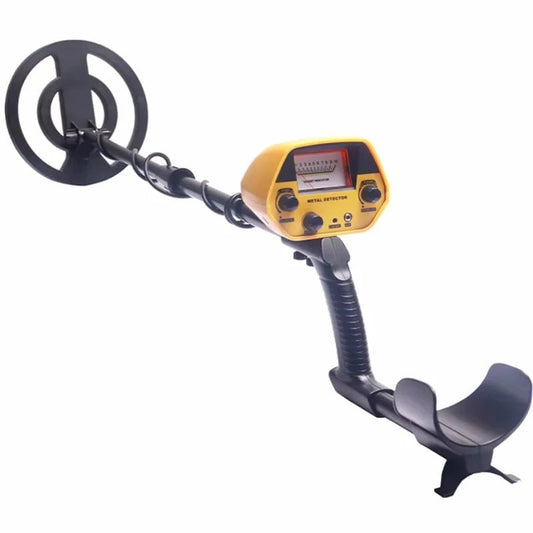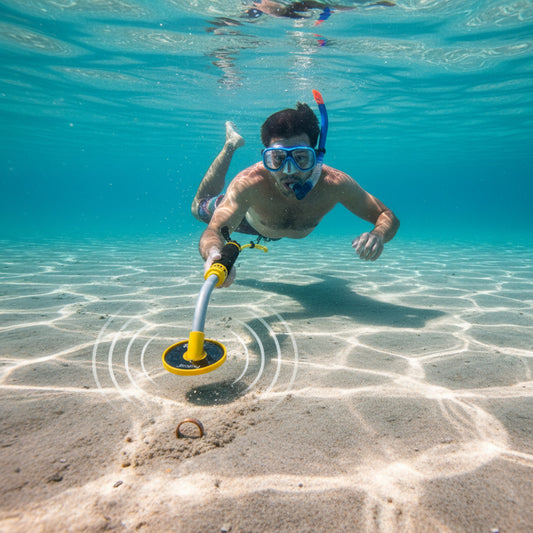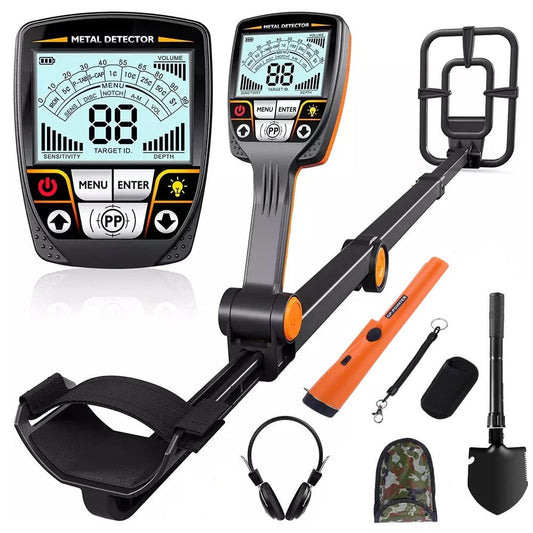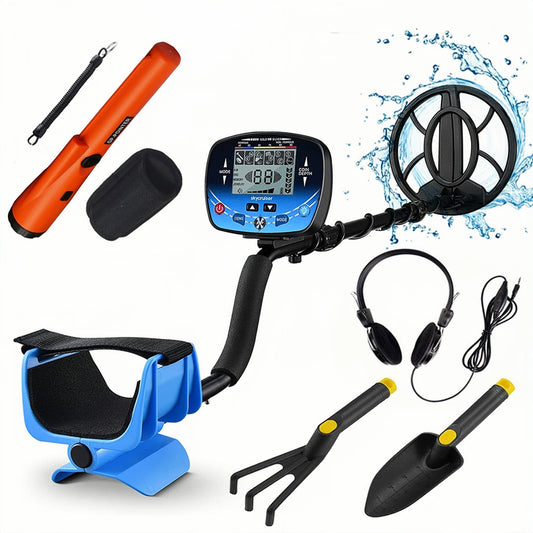
Metal Detecting After a Storm: Unveiling Hidden Treasures
Share
Metal detecting after a storm can be an exhilarating and potentially rewarding experience for treasure hunters. As we enter 2025, this practice continues to gain popularity among both novice and experienced detectorists.
Storms have a unique way of uncovering hidden treasures and creating ideal conditions for metal detecting.
In this comprehensive guide, we'll explore why metal detecting after a storm can be so productive, the best techniques to employ, and important safety considerations to keep in mind.
Why Metal Detecting After a Storm is Beneficial
Storms, whether they're hurricanes, heavy rainstorms, or strong winds, can significantly alter landscapes and unearth hidden objects.

Here's why metal detecting after a storm can be particularly fruitful:
-
Erosion Reveals Hidden Objects: Strong winds and heavy rains can erode layers of soil and sand, exposing items that were previously buried too deep for standard metal detectors to reach.
-
Beach Transformation: Coastal storms can dramatically reshape beaches, uncovering lost jewelry, coins, and other metallic objects that have been hidden for years.
-
Freshly Deposited Items: Recent storms may wash up or deposit newly lost items, especially in coastal areas or near bodies of water.
-
Less Competition: Many people avoid outdoor activities immediately after a storm, giving dedicated detectorists a competitive advantage.
-
Softened Ground: Rain-softened soil can make digging easier and less disruptive to the environment.
Best Locations for Metal Detecting After a Storm
While storms can create opportunities in various locations, some areas are particularly promising for post-storm metal detecting:
1. Beaches

Coastal storms can dramatically alter beach landscapes, making them prime locations for metal detecting:
-
Focus on areas where sand has been eroded or newly deposited
-
Check the high tide line for freshly washed-up items
-
Explore areas near beach entrances and popular gathering spots
2. Parks and Public Spaces

Heavy rains can wash away topsoil in parks and public areas, revealing lost items:
-
Concentrate on areas with high foot traffic
-
Check around park benches, picnic areas, and playgrounds
-
Explore the bases of trees where people often sit
3. River Banks and Lakeshores
Rising water levels during storms can deposit items along shores:
-
Search areas where the water level has receded
-
Focus on bends in rivers where objects tend to accumulate
-
Explore sandbars and newly exposed shorelines
4. Historical Sites
While it's crucial to respect protected areas, some historical sites may allow metal detecting:
-
Always obtain proper permissions and permits
-
Focus on areas where erosion has occurred
-
Be prepared to report significant historical finds
Techniques for Successful Post-Storm Metal Detecting

To maximize your chances of success when metal detecting after a storm, consider these techniques:
-
Timing is Crucial: Try to detect as soon as it's safe after the storm passes. The longer you wait, the more time others have to search the area.
-
Use the Right Equipment: Ensure your metal detector is waterproof or weather-resistant. Consider using a sand scoop for beach hunting .
-
Adjust Your Detector Settings: Post-storm conditions may require adjustments to your detector's sensitivity and discrimination settings.
-
Grid Search: Use a systematic grid pattern to thoroughly cover an area, especially in locations with significant changes.
-
Look for Visual Clues: Pay attention to areas where debris has accumulated or where the landscape has visibly changed.
-
Dig Deep: Be prepared to dig deeper than usual, as storms can bury items further beneath the surface.
Safety Considerations for Metal Detecting After a Storm
While the potential for finds is exciting, safety should always be your top priority when metal detecting after a storm:
-
Wait for Official Clearance: Ensure the area has been declared safe by local authorities before venturing out.
-
Be Aware of Hazards: Watch for downed power lines, unstable structures, and flood waters.
-
Protect Yourself: Wear appropriate clothing and footwear. Consider gloves and eye protection when digging.
-
Stay Hydrated: Post-storm conditions can be humid and energy-sapping. Bring plenty of water.
-
Buddy System: If possible, detect with a partner for added safety.
-
Be Prepared for Emergencies: Carry a first-aid kit and a fully charged mobile phone.
Legal and Ethical Considerations

Even in post-storm excitement, it's crucial to metal detect responsibly and legally:
-
Obtain Permissions: Always get proper permissions or permits, especially in public areas or on private property.
-
Respect the Environment: Fill in your holes and remove any trash you find.
-
Report Significant Finds: If you uncover items of historical significance, report them to local authorities.
-
Be Mindful of Others: Respect other detectorists and members of the public who may be in the area.
What You Might Find When Metal Detecting After a Storm
The types of finds can vary greatly depending on the location and the storm's intensity.
Some potential discoveries include:
-
Modern jewelry and coins
-
Historical artifacts
-
Lost personal items (keys, phones, etc.)
-
Debris from damaged structures (be cautious of sharp objects)
The Future of Post-Storm Metal Detecting
As we look ahead in 2025, several factors may influence post-storm metal detecting:
-
Advanced Weather Prediction: Improved forecasting may allow detectorists to better plan their post-storm hunts.
-
Drone Technology: Some detectorists are using drones to survey areas for potential hotspots after storms.
-
Environmental Concerns: There may be increased regulations to protect storm-damaged areas from excessive digging.
-
Community Involvement: More organized community clean-up efforts may incorporate metal detecting to recover lost items for owners.
Conclusion: The Thrilling Potential of Post-Storm Detecting
Metal detecting after a storm offers a unique opportunity to uncover treasures that might otherwise remain hidden. The combination of nature's reshaping power and the element of recent losses creates a perfect scenario for exciting finds. However, it's crucial to approach post-storm detecting with a balance of enthusiasm and responsibility.
Remember, the true value of metal detecting after a storm isn't just in the potential monetary worth of your finds. It's in the adventure, the connection to history, and sometimes the ability to return lost items to their rightful owners. By practicing safe, legal, and ethical metal detecting, you contribute positively to your community while pursuing an exciting hobby.
So, the next time a storm passes through your area, consider grabbing your metal detector and exploring. With the right approach, safety precautions, and a bit of luck, you might just uncover a piece of history or a valuable treasure that the storm has brought to light. Happy hunting, and stay safe out there!




